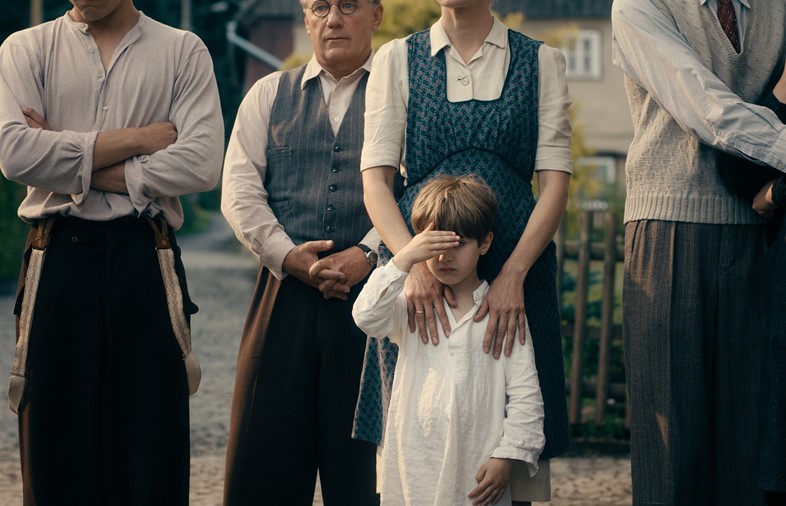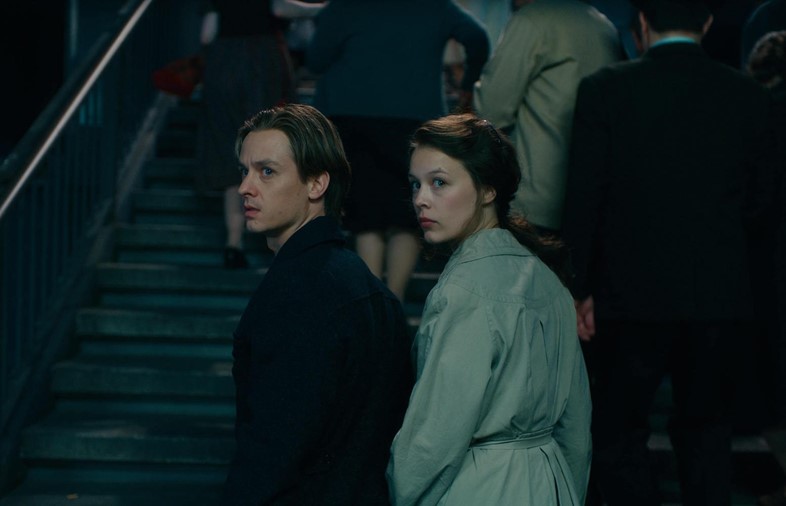Florian Henckel von Donnersmarck tells AnOther about his new film, a fictional tale loosely based on Gerhard Richter’s life in Nazi Germany
“I believe in fiction. I believe that a fictionalisation that is rooted in truth can bring something closer to truthfulness than a mere listing of facts.”
As a child, German film director Florian Henckel von Donnersmarck accompanied his mother to the Zeitgeist exhibition at Berlin’s Martin-Gropius-Bau museum, which housed work by an array of artists including Andy Warhol, Gilbert & George, Julian Schnabel, and Susan Rothenberg. This visit not only ignited the director’s lifelong interest in art but provided inspiration for his new film Never Look Away – namely its opening scene, where we see a young boy accompany his aunt to a Degenerate Art Exhibition in 1937 Dresden. While the exhibition catalogue extols the return to German art, pointing to a Kandisky as a sordid example, the young boy’s aunt whispers to him that she rather likes it.
In this Academy Award-nominated feature, which hits UK cinemas today, Henckel von Donnersmarck draws on life of Gerhard Richter and the death of his aunt, who was murdered by the Nazis, weaving a drama that spans three decades of German life, art and politics. The film follows young artist Kurt Barnert (Tom Schilling) throughout the first 30 years of his life, leading up to 1951 when Kurt and fashion student Ellie Seeband (Paula Beer) meet and fall in love at the Düsseldorf Art Academy. Professor Seeband, Ellie’s disapproving father, a well-known doctor played by Sebastian Koch, opposes the union and fights to break it apart. However, they are all connected by a tragic crime committed by Seeband many years ago, something that affected Kurt’s past, and will impact both their futures.

Henckel von Donnersmarck was inspired to make Never Look Away after new knowledge emerged about one of Richter’s most famous paintings, Aunt Marianne (1965), almost 20 years ago. “There was an important discovery that a journalist [Jürgen Screiber] made when Richter was in his 70s,” he says, “and that was a story behind one of Richter’s incredibly famous paintings, which is a painting where a young girl is holding a little baby in her arms. It was known that this young girl was Richter’s aunt, and shortly after this picture was made she was murdered by the Nazi’s because she was schizophrenic.”
While that story is tragic enough (the Nazi’s murdered over 9,000 mentally ill and disabled people during the war in their quest for a ‘Pure Race’), there was an added layer of shocking intrigue to Richter’s story. “While that story gave a face to the victims of the Nazi’s eugenics program,” Henckel von Donnersmarck explains, “what was not known was that Screiber found out that the father of the woman that Richter ended up marrying after the war was a high-ranking SS doctor and was the head of the hospital where Richter’s aunt was force sterilised, which was the first step to her demise and murder.”
The discovery inspired Henckel von Donnersmarck to research everything he could about Richter’s aunt in his quest to uncover more information about the young woman and her horrendous murder at the hands of the Nazis, but found that when he had read everything, he still needed more. “I read the books that Screiber wrote about it, and it was very interesting, but not as interesting as I hoped had he not had to stick to the facts.” With the assistance of a little artistic license, he decided to make the story a little more interesting himself.
Henckel Von Donnersmarck is keen to emphasise that Never Look Away is not a biopic: he believes that fiction can add weight to gaps left in history and that a little fabrication can make for a more exciting picture. “I just believe in fiction as a medium,” he explains.

Kurt’s vibrant young aunt, Elisabeth, is the clearest example of historic fabrication. In Never Look Away, she is presented as encouraging his artistic talents as a child, and the tragic connection in both Kurt and Seeband’s past, the truth was quite the opposite. “The reality was that Richter had not even known his aunt,” the director explains. “The only contact he had with her was when he was a baby, a few months old, and he never painted paintings that unmasked his father in law. The reality didn’t make for a good film story. I like the freedom of changing things that we have and using whatever we want to use. In a way, it may have been simpler to not even mention Richter, but it was unavoidable because so many people know about that aspect of his life that comes from background research.”
While Richter admirers will appreciate the references to the artist’s work and life, and how his story has provided inspiration for the film (Henckel von Donnersmarck spent hours in Richter’s company interviewing the octogenarian artist), Richter himself has not been as forthcoming with praise, instead choosing not to acknowledge the film for which he inspired such keen intrigue. Henckel von Donnersmarck appears nonplussed by Richter’s disregard. “I’m just using elements of his life story to tell a general story about how we all can use trauma from our life to create rather than to crumple.”
Some of the world’s most powerful art is born from tragedy, and the impulse to create is catharsis for many artists. “It’s a desire to communicate and be in contact with another person,” says Henckel von Donnersmarck of his own need to create art. “And to have some hope that the other person sees the world and feels things in a similar way that I do. Any similar expression is a request for mutual understanding for somehow overcoming the strict boundaries between one person and another.”
Never Look Away is in UK cinemas today.
